
|
As MSI Computer knows, sometimes overkill is a good thing. This seems
to be the philosophy behind the MSI X58 Eclipse Plus motherboard - a jet black beauty built around Intel's X58 Express and ICH10R chipsets for the Intel Core i7 family of socket 1366 processors.
95% Rating: 
|
|
|
|
Home >
Reviews >
Motherboards >
MSI Eclipse Plus |
|
|
Performance Tuning Features and Controls
MSI's X58 Eclipse Plus has a whole
lot of ways to keep you informed of the current system status. The board is
covered in LEDs that show the current power usage and status; LEDs on the CPU
show its current power phase mode, QPI Phase LEDs, LEDs indicating CPU loads,
LEDs on the DDR3 memory banks, LEDs on the southbridge, LEDs on the PCI Express
slots... it's actually a little easier to list what doesn't have an LED
indicator on it.
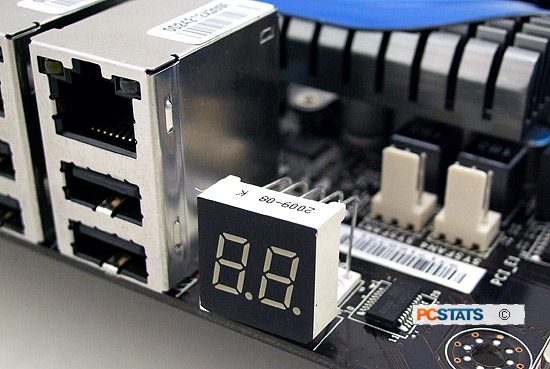
In addition to the on-board light show, MSI has placed a
2-digit Port-80 card on the I/O panel to display error codes. It's an invaluable
tool for overclockers making diagnosis much easier. This is great for
troubleshooting problems at bootup without having to figure out what those POST
beep codes are trying to tell you.
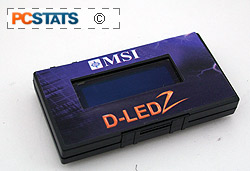 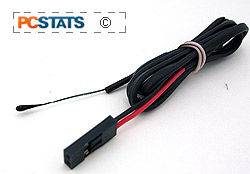
The MSI D-LED 2 is an auxiliary LED display that can be controlled
using the on-board DLED button, which toggles between debug messages and system
messages during normal operation. It also includes a flexible temperature sensor
that can be used to measure heat levels anywhere in the system.
DrMOS, paging
DrMOS
MSI's X58 Eclipse Plus motherboard uses a 6-phase driver-MOSFET(DrMOS) design for
the CPU that can actively switch between power phases depending on
CPU load. This phase switching behaviour can also be applied to
the motherboard's 2-phase QPI, chipset and memory power controllers, and of
course have accompanying lights to indicate their power states. The DrMOS system
should also keep itself cooler than other MOSFET designs, since it uses a split
copper design that allows heat dissipation to take place both above and below
the motherboard's PCB.
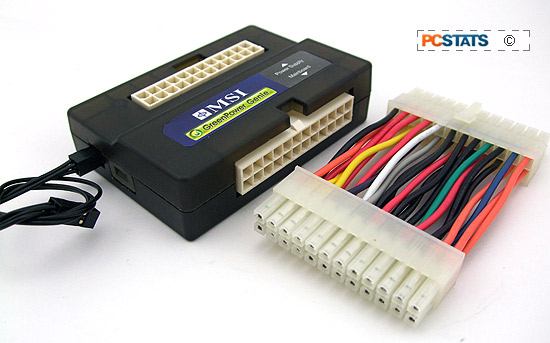
MSI include the Green Genie, a power monitoring
solution that can potentially give more accurate readouts of overall power usage. It's placed between the power supply and the
motherboard, and feeds information directly into the system for real
time reporting vis the BIOS or the MSI DLED 2
display. Like you probably will, we tossed this aside during the benchmark period
with the Eclipse Plus motherboard.
PCI Express
slots and other expansions
The MSI X58 Eclipse Plus is designed to support up to three nVidia Geforce PCI Express x16 videocards
on the three PCI Express x16 slots, or a pair of ATI Radeon videocards in
CrossFireX mode. On the far south edge of the motherboard there's a fourth
physical PCI Express x16 slot that has four lanes of PCI Express bandwidth.
Rounding out the the expansion slots are a pair of PCI Express x1 slots and a
legacy PCI slot so that older peripherals can be plugged in.
|
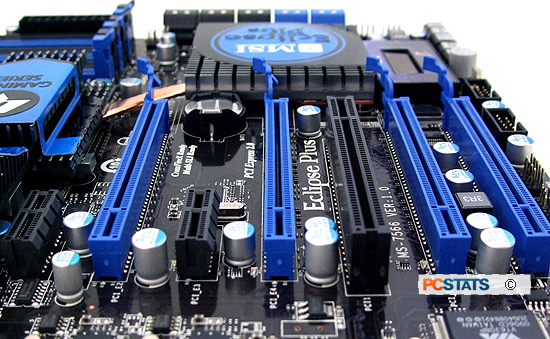
From left to right: a short
black PCI Express 1.0 x1 slot, a blue PCI Express 2.0 x16
slot, another short black PCI Express 1.0 slot, another
blue PCI Express 2.0 x16 slot, a legacy black PCI slot, the final blue PCI
Express 2.0 x16 slot, and a fourth PCI Express 2.0 slot that x4
bandwidth.
|
MSI accomodates for multiple graphics modes by including all of the possible
SLI and Crossfire adapters you could possibly need. There are two short SLI
bridges, one long SLI bridge, and three Crossfire bridges. Why is there a third
Crossfire bridge when MSI says the motherboard only supports two-way Crossfire? No one
knows for sure.
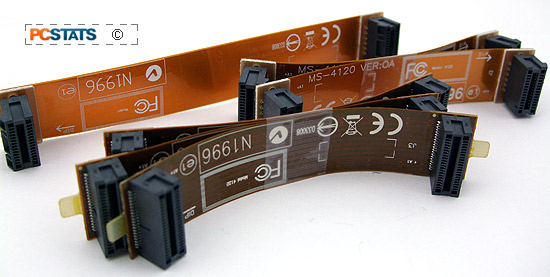
The physical layout of the expansion slots means that there's still room to
wedge the X-FI Xtreme audio card even when running in triple-SLI mode with three
Geforce graphics cards. In the more-common dual graphics modes, there would
still be room for an extra PCI device, or a few PCI Express based
cards.
Everything
else...
If you decide to run three-way SLI on the Eclipse Plus motherboard it's a good idea to invest
in additional system cooling. The MSI Eclipse Plus is predictably overflowing
with system fan headers, there are five scattered around the outside of the
motherboard, in addition to the CPU fan header.
MSI rounds out the goodie box with eight click-connect
SATA cables, extra USB and eSATA brackets (with additional cabling for power and
data transfer) and four molex to SATA power adapters. There's also a pair of
driver and utility discs, five manuals, and a tiny, spare X58 motherboard so you
can boot while you boot. Okay, that last one
was a lie.
Follow along as PCSTATS takes a detailed walk around the MSI Eclipse Plus and get a better look at
the motherboard layout.
|
